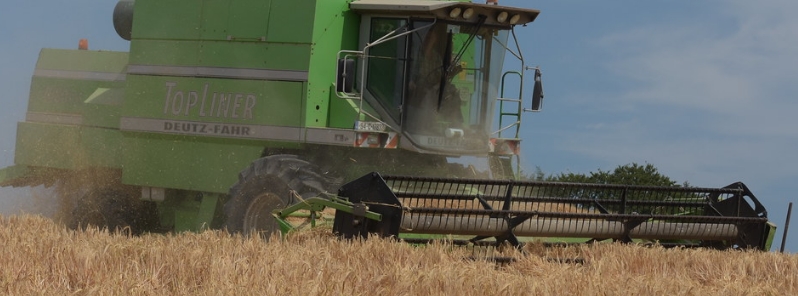Northern Ireland under worst drought since 1976

Farmers in Northern Ireland are facing the worst drought since 1976. It came after an unusually dry spell and the sunniest spring ever, with records dating back to 1929.
Allan Chambers, a member of the UFU's Seeds and Cereals Committee, said the lack of rainfall placed farmers under a dire situation. According to Met Office, this year's spring, which spans from March to May, was the sunniest on record for the region.
The season recorded an average of 564.4 hours of sunshine across the area's weather stations– the average for a Northern Irish spring is 428.78. The Met Office also recorded an average of 125.3 mm of rain, which is only 52% of the spring average.
The average spring 2020 temperature for Northern Ireland was at 13.04 °C (55.47 °F), which was 1.25 °C (2.25 °F) higher than normal.
Chambers, a former chairman of the committee, is based outside Downpatrick and has three main crops– winter barley, winter wheat, and forage maize. Both winter crops are in trouble, he said, while the maize needs rain.
"It’s been horrendous," Chambers described, pointing out that the situation feels worse than what the weather bureau indicated. His farm had only experienced as little as 15 to 25% of usual rain during spring.
"It just hasn’t rained for two-and-a-half months. I’m farming now for almost 60 years, and this is the most extreme spring that I have ever seen."
"The closest we came to the drought situation was back in 1976. This has been even more severe."
What makes it worse is that his crops were already suffering after the winter, which he said was the wettest four months ever.

"Then all of a sudden around the 17th of March everything dried up and there really hasn’t been any volume of rain since." He added, "It’s almost at the stage now where it’s too late to save some of them, to make any reasonable crop at all."
He expects his crops to be down by 20%, but it could be 50% if the dry spell continues– something which could lead to a drop in income in the region of 76 000 dollars or 60 000 euros.
"We’ll survive. We’ll just have to go to the bank and get a bridging loan. I’ve done that before, we’ve had extremes of weather before. Way back in 1985 we had the wettest harvest we’ve ever had. We lost nearly everything that year."
"Everyone, even grassland farmers in our area, is really worried and concerned about grass yields. Silage has to be baled to feed cattle over the wintertime and if the grass doesn’t grow you can’t bale silage."
Chambers thinks this could be linked to climate change. "It could well be. There’s no doubt that we’re getting more extremes of weather."
"For instance, last winter’s continuous rain. And this summer’s continuous dry weather." He continued, "This is extremely unusual that the two would happen within a 12 month period."
Featured image credit: Shane Casey/Flickr

its due to the GRAND SOLAR MINIMUM and could be a 200 year or more event depending on the severity of it…the bad news is its going to get alot colder especially the next 3 winters